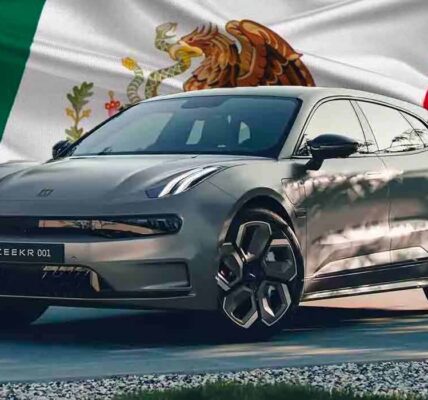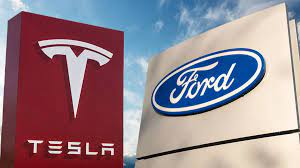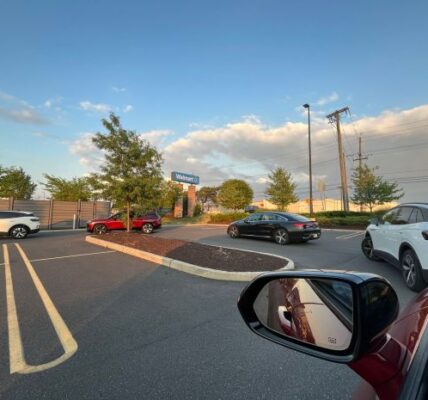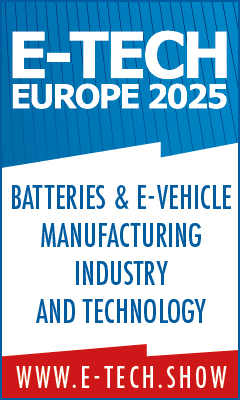While the US public has never been very enthusiastic toward electric vehicles, it seems that it has become openly hostile in the past months. This might be puzzling to people who wonder why all the recent technical advances in EV and battery tech haven’t made electric cars more popular. The answer? It’s complicated.
Despite the major advantages of electric vehicles, the adoption rate in the US stalled even before the administration passed legislation to cut subsidies. The US market is the outlier, as other regions have continued to increase their EV market share at an accelerated pace. This is most obvious in China, which accounts for more than half of all electric vehicles sold in the world. However, Europe has also made progress in the first half of 2025, whereas the US is going backwards.
A recent Rho Motion research revealed that more than 9 million plug-in vehicles (BEV+PHEV)were sold globally in the first half of 2025. This represents a 28% increase compared to the first half of 2024. China alone reported 5.5 million EV sales, a 32% increase, with Europe a distant third: 2 million EVs sold, 26% more than in 2024.
Meanwhile, North America, one of the world’s biggest car markets, bought less than a million EVs, an increase of only 3%. The main culprit is Canada, which lost 23% of EV sales, partly compensated by Mexico (+20%) and the US (+6%). While the US doesn’t look as bad as Canada in this regard, it still reflects a general disdain for electric vehicles. Considering that Biden-era incentives will be phased out in September, the market will turn even more aggressively against EVs.
There’s an important caveat here: not all plug-in vehicles are equal, and not all regions have comparable mixes of battery-electric and PHEVs. For instance, China has more plug-in hybrids (PHEV), whereas battery electric vehicles are more popular in the US and Europe. But this doesn’t change the fact that EV perspectives are bleak in the US, which has prompted companies to put their EV and battery plans on hold.
Why aren’t Americans more attracted to electric vehicles?
The reasons why Americans are not very keen on adopting electric vehicles are diverse and not very well understood. Recently, we received an email from one of our readers who was puzzled about why people abandoned plans to buy an electric car despite all the advances in EV and battery tech that are made around the clock. What’s causing people to hate electricity, despite its many advantages? Let’s explore them before venturing to find an explanation.
Electricity is the best form of energy known to humankind. It can be easily produced from other energy sources and can even be harnessed from the sun or wind with very low costs. It can be easily transported over long distances with very low losses and is ubiquitous. Thanks to advancements in battery tech, it can be efficiently stored in high-energy-density packages that can be used to power different devices, including vehicles like cars and boats.
And yet, few Americans consider electric vehicles a viable form of transportation. Many don’t even consider them “real cars” but rather home appliances. They often cite inaccurate urban legends as drawbacks, including the danger of exploding batteries, the very short lifecycle of a battery pack, or the long time needed to charge it. A few years ago, the price was also a consideration, but EVs have become more affordable while combustion vehicles have increased their prices.
A cultural problem
Interestingly, car buyers often cite similar preconceptions in all markets, including Europe and China. And yet, Americans are more permeable to the FUD (fear, uncertainty, and doubt) surrounding electric vehicles. There may be several explanations, but I think the way the electric grid works in the US might be to blame.
The US doesn’t have a unified grid like China and the European Union. Even though the EU is comprised of different countries, each with its own energy policies and objectives, they are all interconnected at the grid level. In the US, however, each state has its own independent grid or several grids, effectively islands in their service areas. This makes them less stable and prone to disruptions when the consumption peaks or drops abruptly.
Disruption to energy generation and distribution often led to life-threatening situations in emergencies, making people increasingly skeptical of new technologies. Add to this big-oil propaganda and the vilification of solar and wind generation, which have been blamed for all the disruptions, and you might have an idea why batteries and electric vehicles are distrusted.
Is the EV market in the US really shrinking?
Of course, not all Americans hate electric vehicles, but there’s a relatively small overlap between those who love them and those who can afford them. After everyone who wanted to buy an EV has already bought one, it becomes much harder to sell EVs to new demographics.
Tesla did a marvelous job in making EVs popular, but it also did a hell of a job making people hate them. Add the reluctance to advertise and promote the advantages of electric cars, and you’ll understand why large swathes of the population still believe the anti-EV legends.
Tesla is still a dominant EV manufacturer, with almost half the US market share in the first half of 2025. This means that any drop in Tesla sales will have a huge impact on the US EV market. And Tesla did lose sales, mostly due to Elon Musk’s political ventures and his embrace of right-wing factions and conspiracy theorists. This cost it 11% of its sales in the first half of the year (compared to 2024), or 33,000 vehicles in absolute numbers, dragging the whole EV market down.
The worst part is that things aren’t going to improve. A perfect storm is brewing, fueled by the tariff war and the scrapping of EV and battery incentives. EV prices are set to increase, first because many parts are subject to tariffs, and second because there will be no tax credit to lower the purchasing price. As I argued in a previous article, this will generate a gold rush-like urge to buy electric vehicles this quarter. However, what comes after that is more terrifying.
The volatile business environment was already putting companies on the back foot. However, the loss of incentives courtesy of the One Big Beautiful Bill (now enacted) might have nailed the coffin for many battery and EV projects. Add to this the reversal of tougher emissions regulations, which effectively killed the ZEV certificate market, and you’ll understand why America risks lagging in electrification.
Tough times even for established carmakers
It’s not like EVs will disappear because the lack of incentives would make them a tough buy. Studies have shown that EV owners are reluctant to go back to driving a gas car once they get “electrified.” However, fewer would be tempted to trade in a gas car for an EV that is very expensive, besides representing the unknown that they fear. And this will generate a downward spiral, with fewer and less affordable models available on the market, causing the prices to rise further.
Any vehicle that cannot be sold outside the US is in jeopardy because the economics of building it don’t add up. Most carmakers are already losing money on their EVs, and they have no reason to continue losing money when there’s no pressure to meet emission targets anymore. Many legacy carmakers are turning again toward gas and hybrid vehicles that bring in the cash. Ford is a good example, having almost thrown in the EV towel even before Trump messed things up.
Japanese carmakers like Honda and Nissan are also scaling back their goals to build new EVs in the US. Honda reportedly slashed plans to build a large electric SUV and is cutting its EV spending. It also canceled plans to jointly develop more affordable EVs with GM. Meanwhile, Nissan is nearing bankruptcy after a failed merger attempt (with Honda, no less) and is already cutting output capacity for the all-new Leaf EV. Nissan also put plans to build two new EVs at its Mississippi plant on hold.
The ugly truth: not all EV startups will make it
While legacy carmakers can always come back to making ICE vehicles, EV startups don’t have this luxury. Rivian is in a very tight place, as its affordable EVs might not be that affordable without the EV credit. Rivian’s fate is on the line here, as it cannot become profitable if the R2 and R3 compact EVs are not successful. However, their success depends largely on the price, and Rivian better ensure this will remain under $45,000 as announced at the unveiling event.
Rivian has a hard price ceiling for its compact EVs, which is the price at which Tesla sells the Model Y. Currently, the most expensive Model Y is the Long Range AWD variant at $48,990. Tesla will soon launch the Performance model, but considering past trends, it should not sell above $53,000. This is an especially tough price to beat for a high-performance R2, even if Rivian installs three motors in it. Customers would not care much about this and would only see that it’s more expensive than a Tesla Model Y Performance.
Slate Auto is cute, but will it be enough?
Even more uncertain is Slate Auto’s fate. The Bezos-backed startup promised the cheapest EV on the market, with prices starting below $20,000. However, that included the federal EV credit, and Slate has since scaled back its ambition once the credit was canceled. The base model, which arrives in 2026, is now expected to start “in the mid-twenties.”
That is, if Slate Autos is able to sell it. To make it that cheap, the startup scrapped a lot of things, and adding them back is not always possible or worth it. The base configuration doesn’t include power windows or even a radio, but you can add some extras to spice up your configuration. Slate Auto bets that it can make you splurge money on personalizing your Slate, but it doesn’t say how much it will cost.
After all, if you end up with a significantly more expensive vehicle than competitors’ comparable configurations, Slate will not close enough sales to survive. So far, the biggest threat comes not from another EV but from the highly popular Ford Maverick. A well-equipped Ford Maverick Lariat starts at under $40K. Even the base XL trim, which is under $30K, has arguably more equipment than a Blank Slate while being much better at towing and hauling stuff.
Lucid just got a new lifeline
Lucid Motors, the other struggling EV startup, is less exposed to the lack of EV incentives. Its vehicles are way more expensive, although Lucid also had plans to launch a compact crossover to compete with the Tesla Model Y. I’m sure the economics of making it profitable have significantly shifted with the tax credit removal. However, Lucid has two advantages that Slate and Rivian don’t: the rich Saudi market and the backing of wealthy sheikhs from the Private Investment Fund (PIF).
Lucid has another ace up its sleeve, which was revealed earlier this week: it secured an investment from Uber. The $300 million would allow Uber to dream of having its own autonomous vehicles and compete with Tesla and Waymo. Since Lucid doesn’t have functional autonomous driving technology, Uber also invested in Nuro, a startup specializing in autonomous delivery vehicles.
What about the battery projects?
While Trump’s Big Beautiful Bill dealt a severe blow to new EV models, it has the opposite effect on battery projects. The new law doesn’t outright eliminate the incentives but introduces stricter restrictions each year. This nudged more companies to accelerate the construction of their new EV battery plants. This allows them to access more funds and face more relaxed guidelines for sourcing battery, components, and manufacturing equipment.
This might explain why many companies, including LG, Panasonic, Ford, and Tesla, announced their new battery factories almost at the same time. Unsurprisingly, many of those projects are for producing LFP batteries. Cheaper than nickel-based counterparts, LFP batteries are key to building affordable EVs in a market without subsidies.
Both Tesla and Ford are building their LFP-cell manufacturing facilities, and both have some sort of partnership with China’s CATL. This makes qualifying for the incentives under the updated BBB guidelines more problematic, but not impossible. Ford licensed LFP tech from CATL, whereas Tesla bought its excess equipment and will use proprietary LFP chemistry without involving CATL.
However, there’s a big question mark about what these batteries will power if American carmakers no longer prioritize electric vehicles. Some could be repurposed for energy storage batteries, but not all. Luckily, LG already decided in 2022 that its new factory in Holland, Michigan, would produce LFP cells solely for the energy storage market. In hindsight, that was an exceptionally smart decision.








